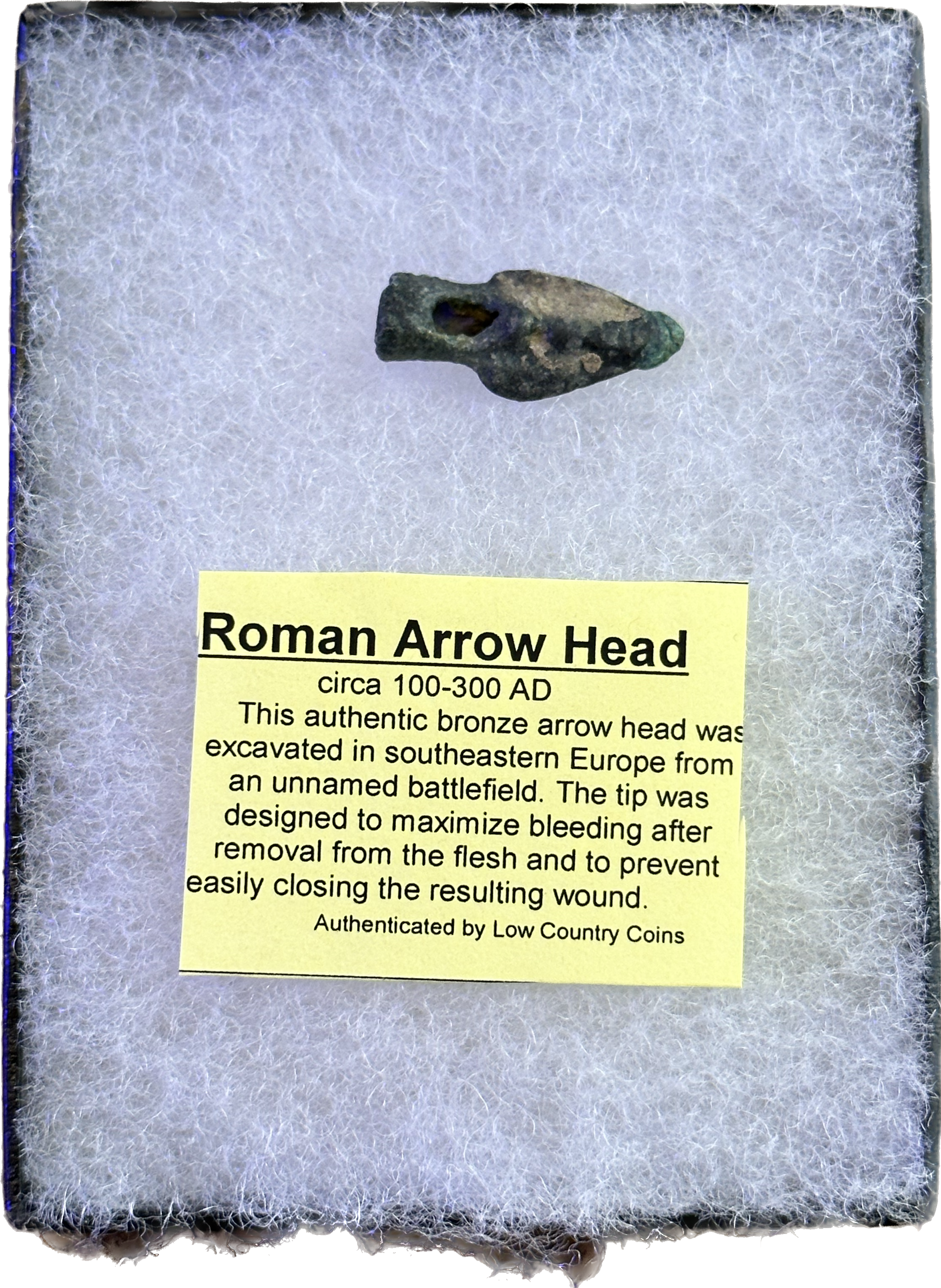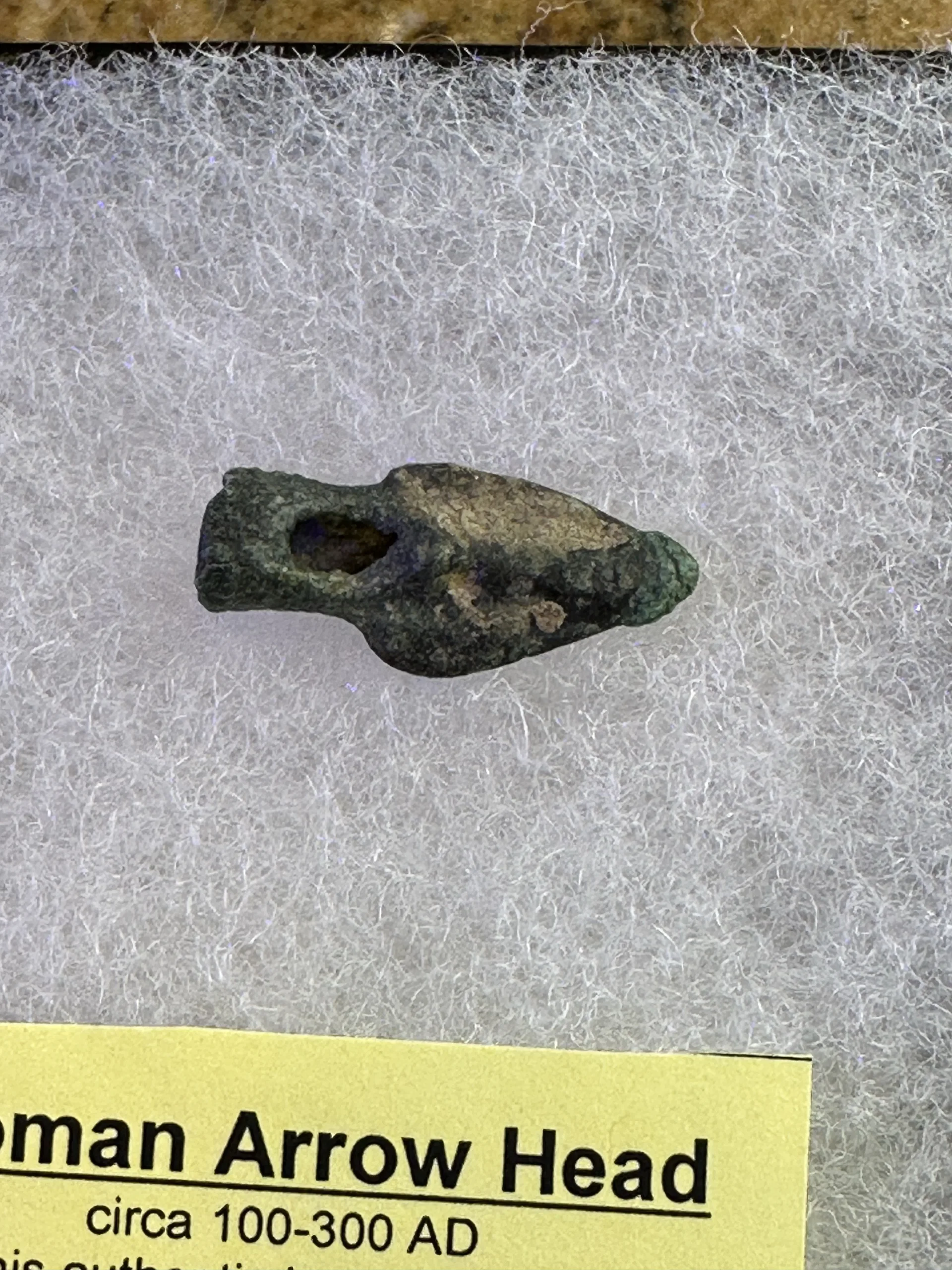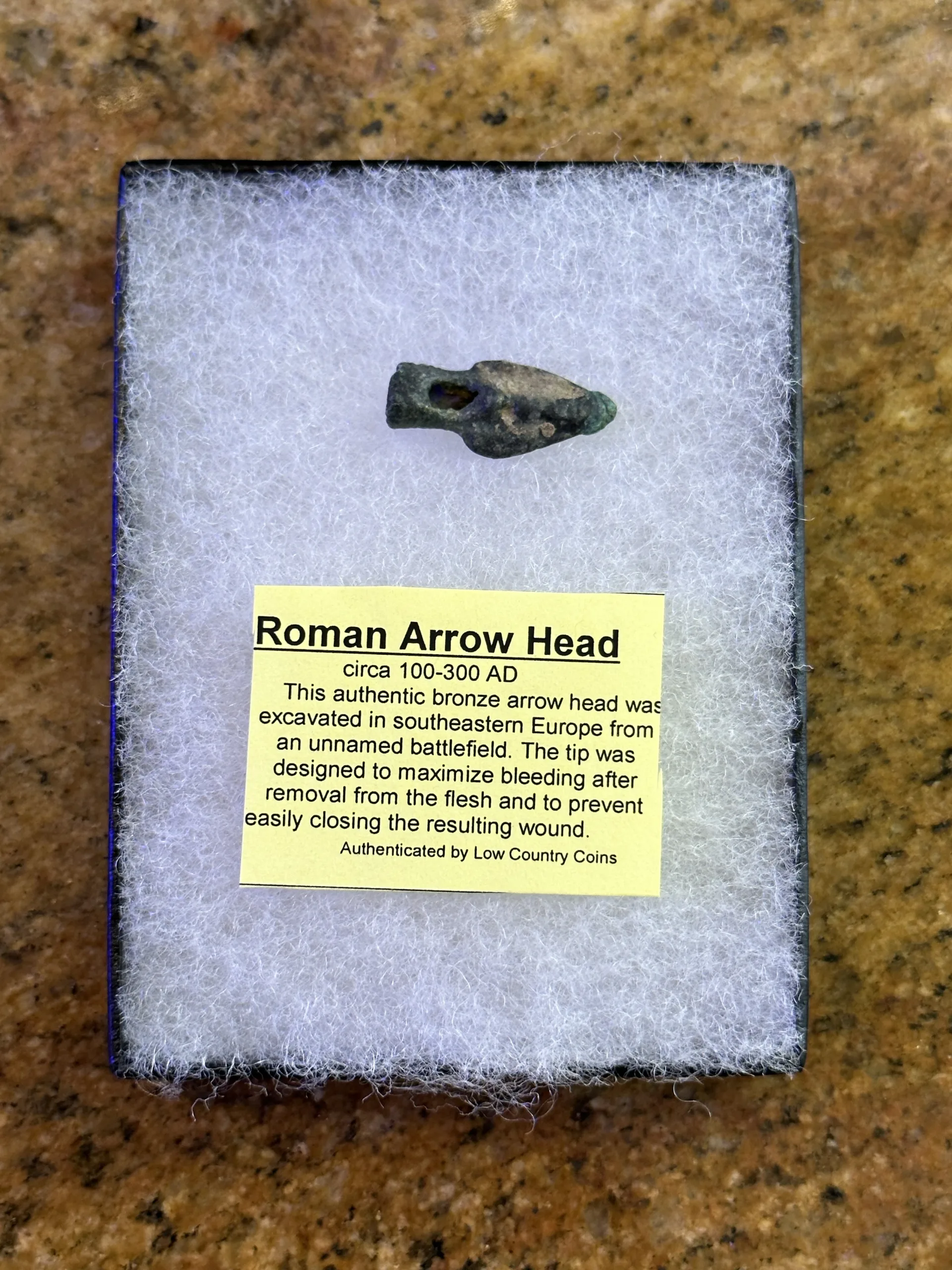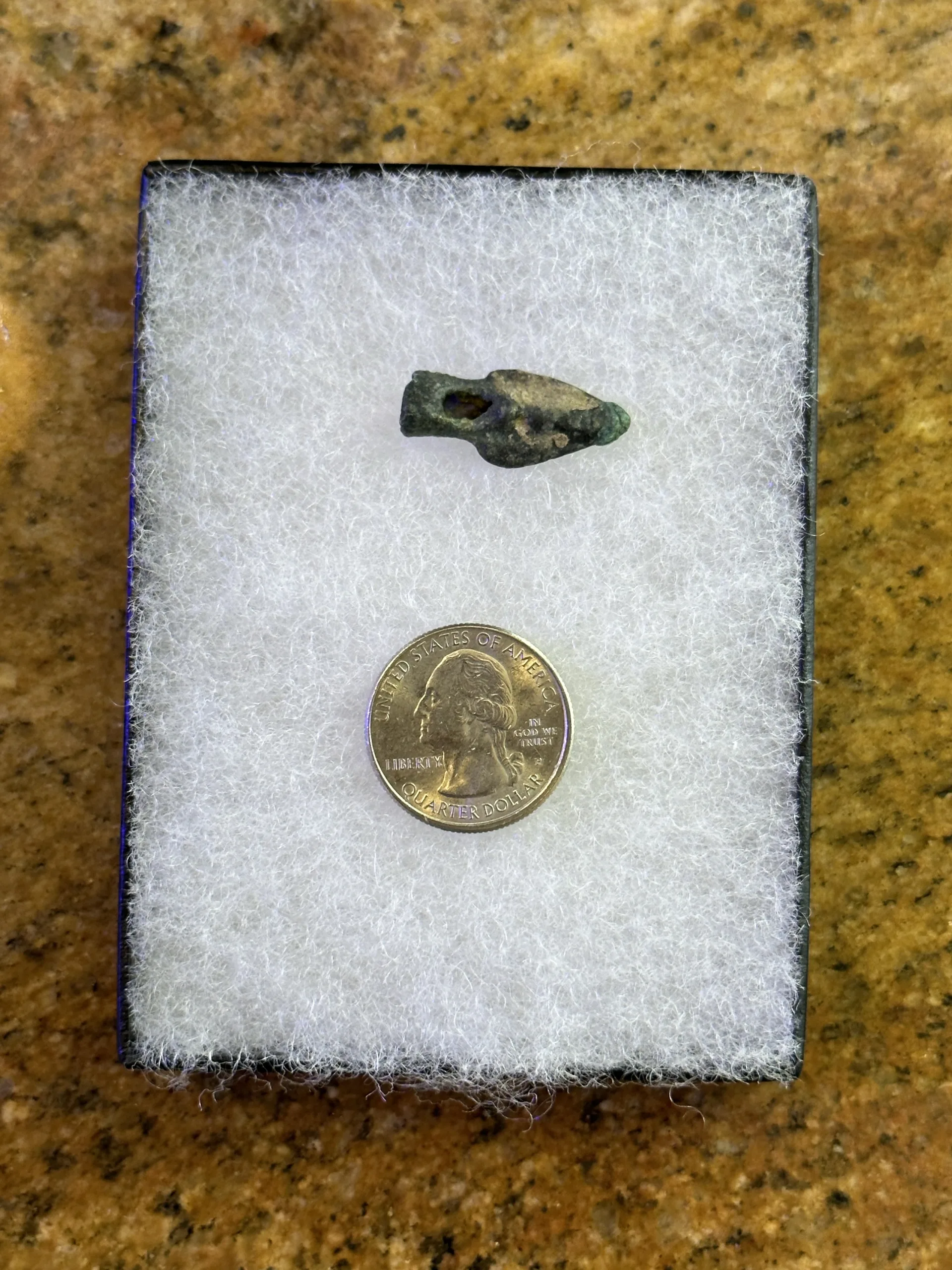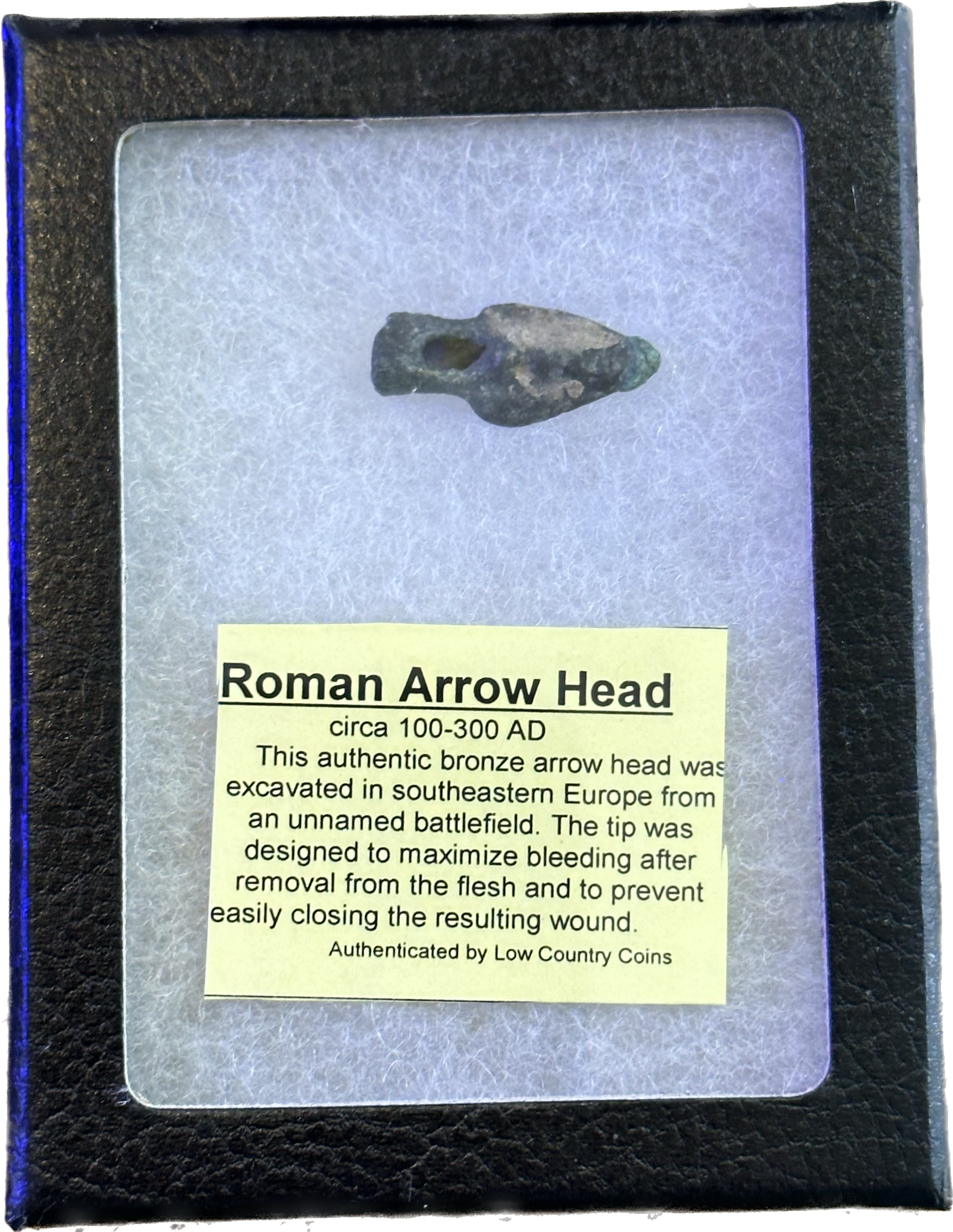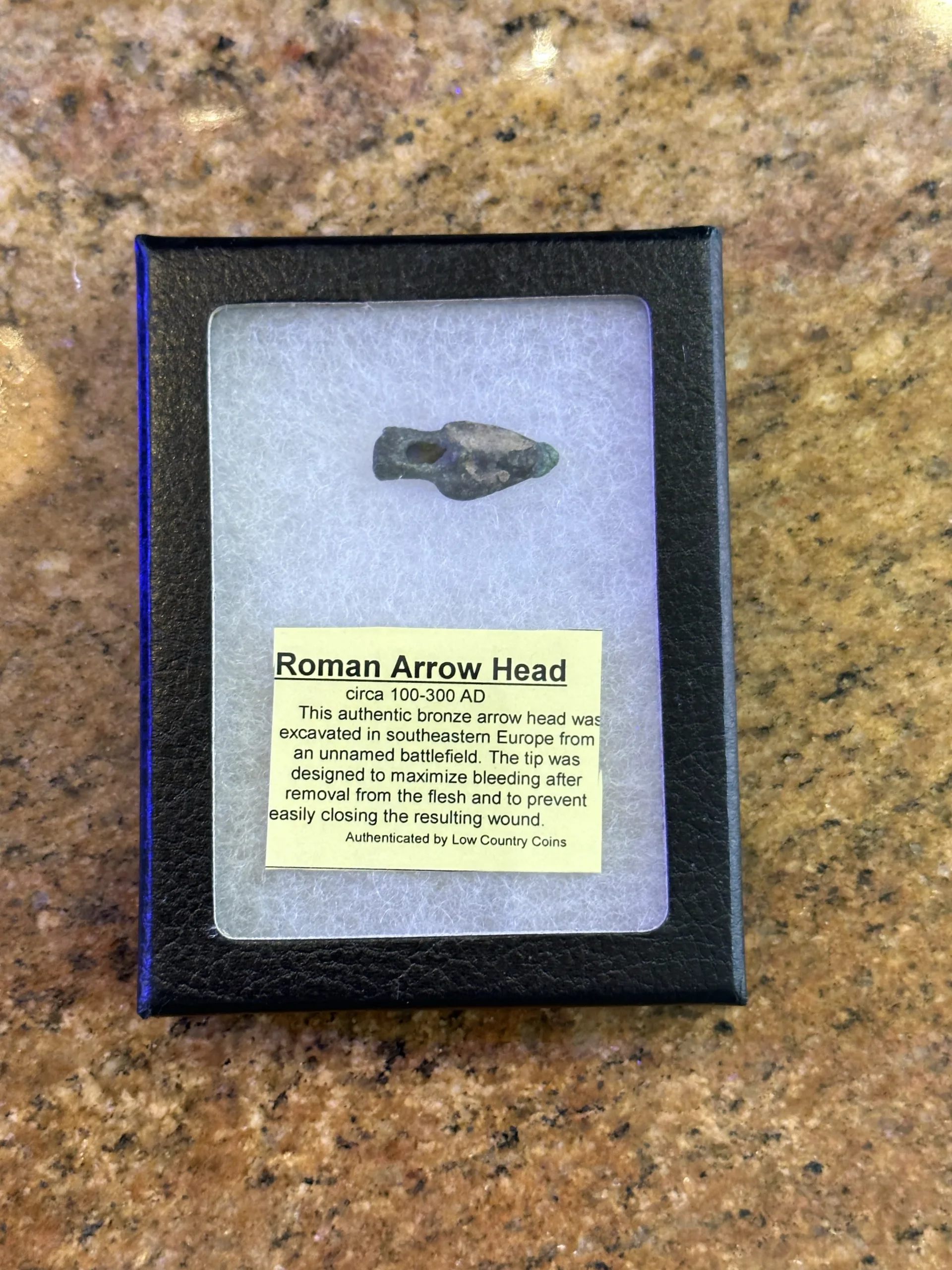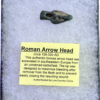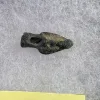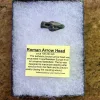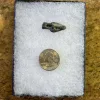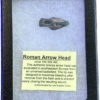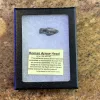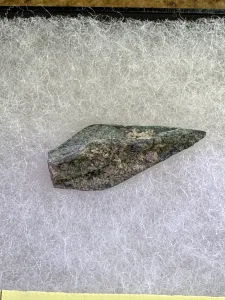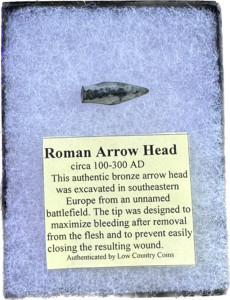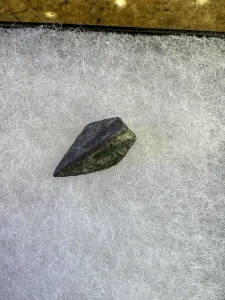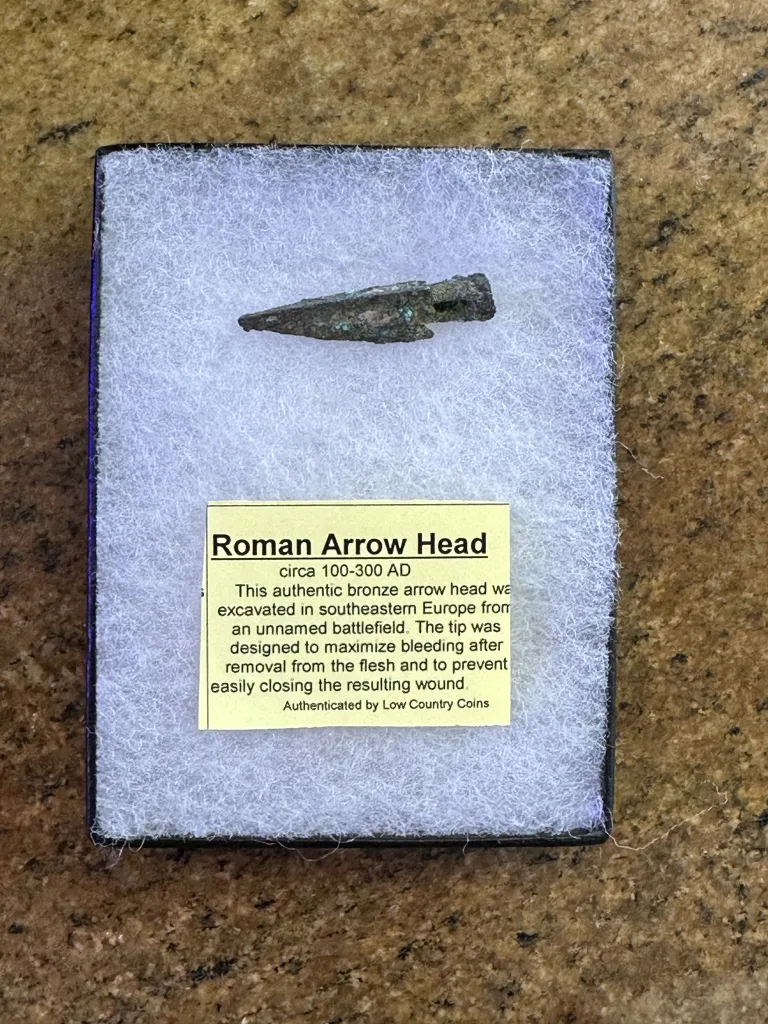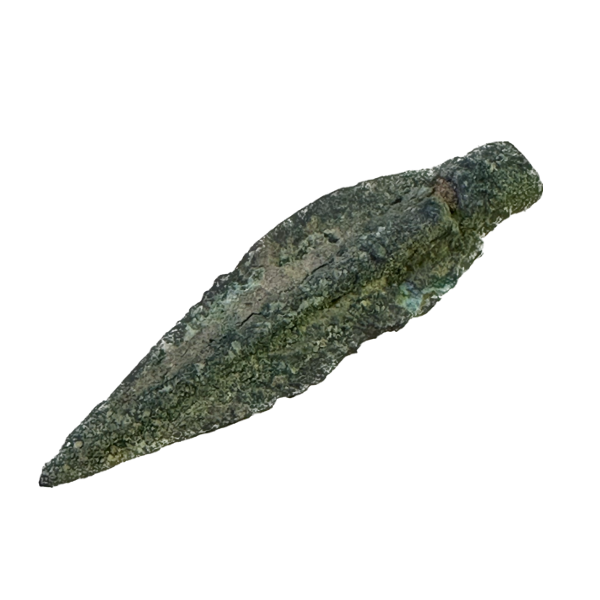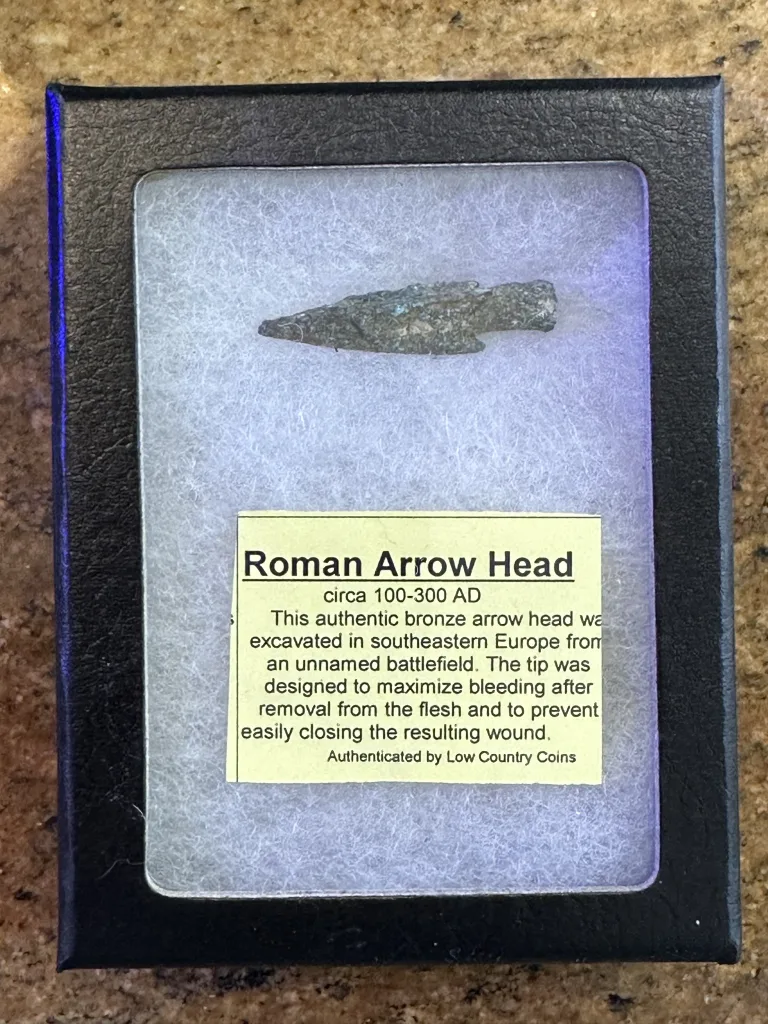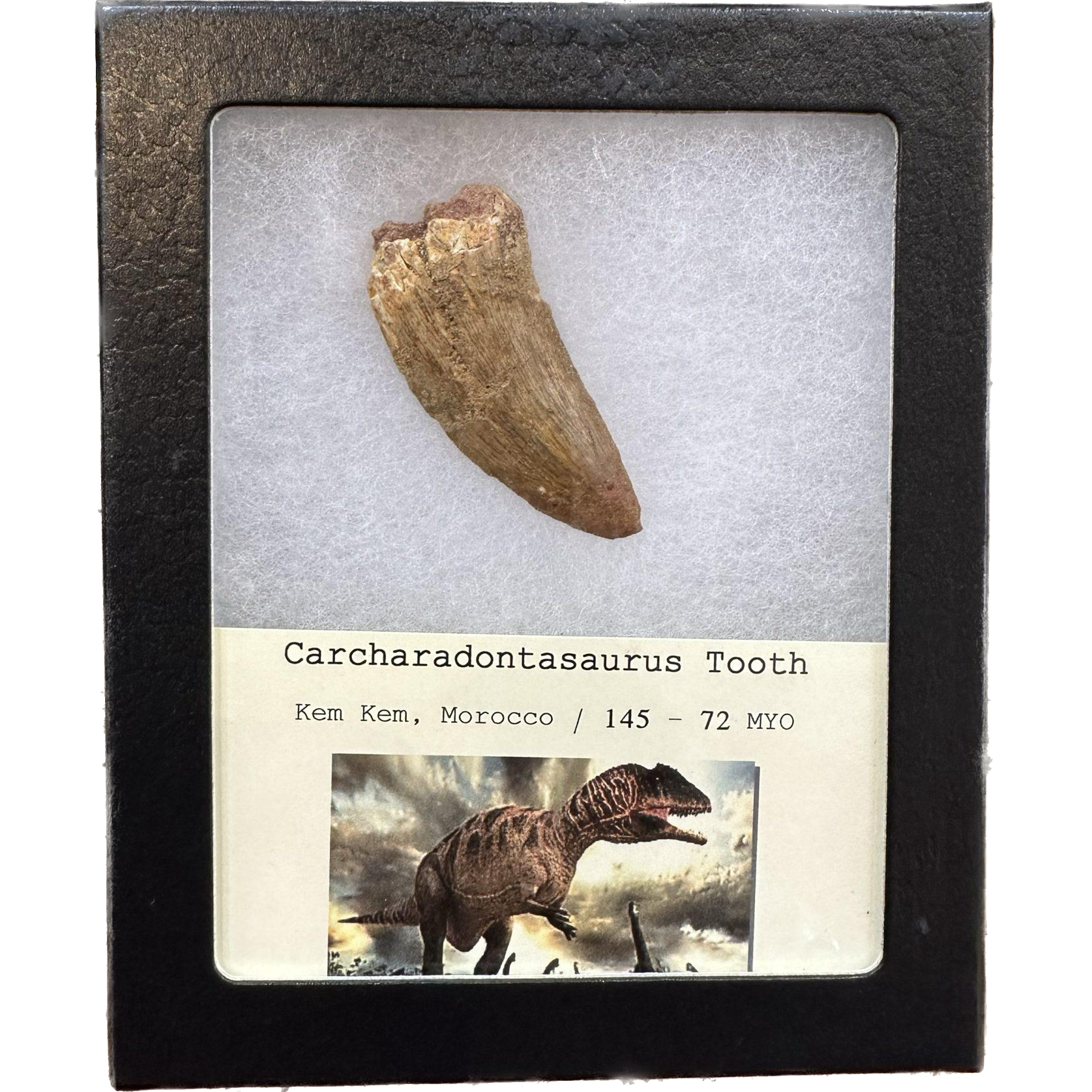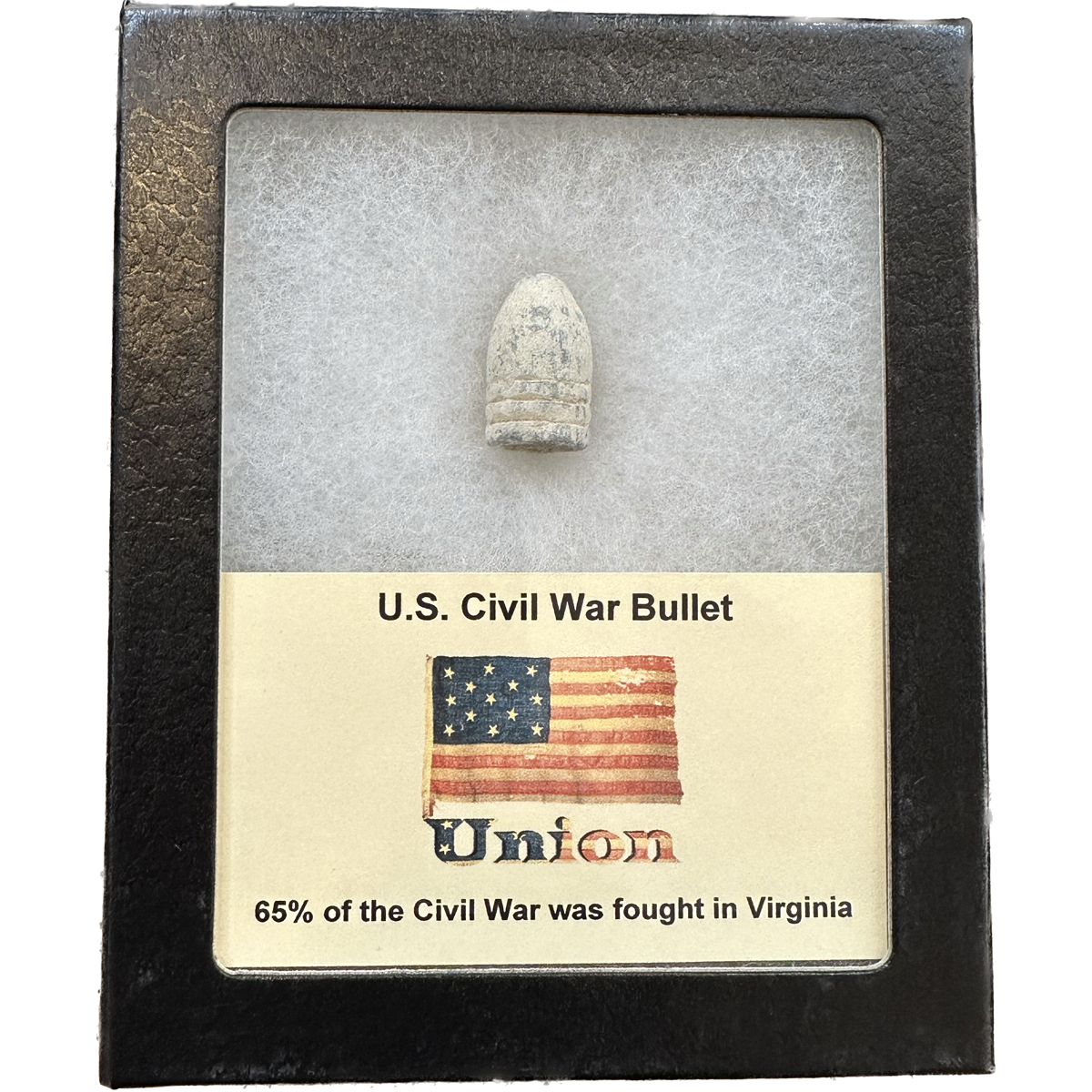Dating back to 100-300 AD, this ancient bronze Roman arrowhead bears fascinating and unique wear patterns. Measuring around 1 inch in length, its surface displays a deep green natural patina, acquired over centuries, adding to its mystique. Serving as a tangible testament to the military might and technological advancements of the Roman Empire, this artifact holds profound historical significance. Safeguarded within a protective Riker collector box, it comes with a descriptive card outlining its origins and importance. Whether showcased for its unusual wear or treasured as a link to ancient history, this arrowhead sparks curiosity and invites exploration into the enigmatic world of antiquity.
Ancient Roman arrowheads, or pilum, represent not just simple tools of war, but rather sophisticated implements that played a crucial role in the military strategies and successes of one of history’s most formidable civilizations. These arrowheads were not merely weapons; they were symbols of Roman engineering ingenuity and tactical prowess.
Design and Construction:
The design of Roman arrowheads was purposeful and sophisticated. Crafted predominantly from iron, these arrowheads featured a distinctive shape characterized by a long, slender shaft and a pointed tip. What made the pilum particularly effective was its unique construction. The shaft was typically made of soft iron, while the tip was hardened. This design allowed the pilum to bend upon impact, making it difficult to remove from shields or bodies. This bending action rendered the pilum unusable for the enemy, disrupting formations and weakening defenses.
Tactical Importance:
In the ancient Roman army, the pilum was not just one among many weapons; it was a cornerstone of their military tactics. Roman soldiers would hurl volleys of pilum at the enemy lines before engaging in close combat. This barrage of projectiles was aimed not just at causing physical harm but also at disrupting enemy formations and sowing confusion among their ranks. The pilum was designed to penetrate armor, making it effective against both infantry and cavalry units. Its ability to incapacitate enemy soldiers and destabilize their defenses gave the Roman legions a significant advantage on the battlefield.
Impact on Warfare:
The introduction of the pilum revolutionized ancient warfare and contributed significantly to the success of Roman military campaigns. Its effectiveness against armor and its capacity to incapacitate enemy soldiers were unmatched by contemporary weapons. Furthermore, the psychological impact of facing a barrage of pilum would often demoralize opposing forces, making them more susceptible to defeat. The pilum played a crucial role in numerous Roman victories, from the conquest of Italy to the expansion of the empire across Europe, Africa, and Asia.

Archaeological Significance:
Archaeological excavations across the former territories of the Roman Empire have unearthed a wealth of Roman arrowheads, providing valuable insights into their manufacturing techniques, distribution patterns, and usage by the Roman army. These artifacts offer tangible evidence of ancient battles and military strategies, allowing historians to reconstruct the tactics employed by Roman soldiers on the battlefield. The study of Roman arrowheads also sheds light on the organization of the Roman military, as well as the technological advancements achieved by ancient engineers and craftsmen.
Legacy and Influence:
The legacy of Roman arrowheads extends far beyond the boundaries of the ancient Roman Empire. Their design and tactical effectiveness have inspired military innovations throughout history. Even today, the principles underlying the construction of Roman arrowheads—such as the combination of hardness and flexibility for maximum impact—remain relevant in modern military engineering. The pilum serves as a testament to the ingenuity and resourcefulness of ancient civilizations, reminding us of the enduring impact of their innovations on the course of human history.


